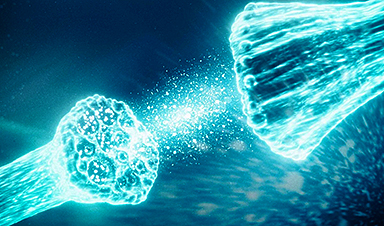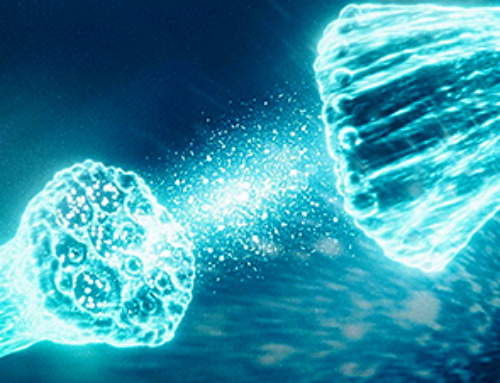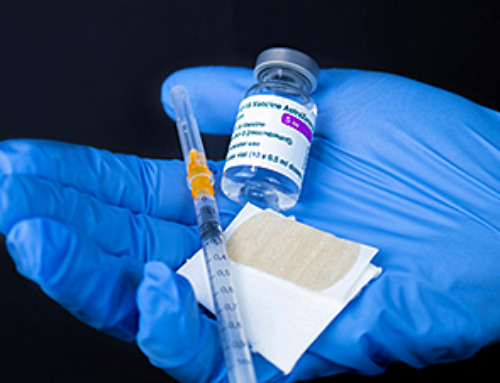Cryptocurrency is usually “mined” through the blockchain by asking a computer to perform a complicated mathematical problem in exchange for tokens of cryptocurrency. But in research appearing in the journal Chem a team of chemists has repurposed this process, asking computers to instead generate the largest network ever created of chemical reactions which may have given rise to prebiotic molecules on early Earth.
“At this point we can say we exhaustively looked for every possible combination of chemical reactivity that scientists believe to had been operative on primitive Earth,” says senior author Bartosz A. Grzybowski of the Korea Institute for Basic Science and the Polish Academy of Sciences.
To generate this network, the researchers chose a set of starting molecules likely present on early Earth, including water, methane, and ammonia, and set rules about which reactions could occur between different types of molecules. They then translated this information into a language understandable by computers and used the blockchain to calculate which reactions would occur over multiple expansions of a giant reaction network.
“The computer takes the primordial molecules and the accepted prebiotic chemistries. We coded it into the machine, and then we released it onto the world,” says Grzybowski.
Grzybowski’s team worked with chemists and computer-specialists at Allchemy, a company that uses AI for chemical synthesis planning, to generate the network using Golem, a platform that orchestrates portions of the calculations over hundreds of computers across the world, which receive cryptocurrency in exchange for computing time.
The resulting network, termed NOEL for the Network of Early Life, started off with more than 11 billion reactions, which the team narrowed down to 4.9 billion plausible reactions. NOEL contains parts of well-known metabolic pathways like glycolysis, close mimics of the Krebs cycle, which organisms use to generate energy, and syntheses of 128 simple biotic molecules like sugars and amino acids.
Curiously, of the 4.9 billion reactions generated, only hundreds of reaction cycles could be called “self-replicating,” which means that the molecules produce additional copies of themselves. Self-replication has been postulated to be central to the emergence of life, but the vast majority of its known manifestations require complex macromolecules like enzymes.
“Our results mean that with only small molecules present, self-amplification is a rare event. I don’t think that this type of self-replication was operative on primitive Earth, before larger molecular structures were somehow formed,” says Grzybowski. “We see emergence of primitive metabolism, but we don’t see self-replication, so maybe self-replication appeared later in evolution.”
“If you asked me two years ago, I’d be thinking we’d need years for this type of work,” says Grzybowski. “But for a fraction of the cost, in two or three months, we finished a task of 10 billion reactions, 100k times bigger than we did previously.”
More information: Emergence of metabolic-like cycles in blockchain-orchestrated reaction networks., Chem (2024). DOI: 10.1016/j.chempr.2023.12.009. www.cell.com/chem/fulltext/S2451-9294(23)00611-3
News
Scientists Unlock a New Way to Hear the Brain’s Hidden Language
Scientists can finally hear the brain’s quietest messages—unlocking the hidden code behind how neurons think, decide, and remember. Scientists have created a new protein that can capture the incoming chemical signals received by brain [...]
Does being infected or vaccinated first influence COVID-19 immunity?
A new study analyzing the immune response to COVID-19 in a Catalan cohort of health workers sheds light on an important question: does it matter whether a person was first infected or first vaccinated? [...]
We May Never Know if AI Is Conscious, Says Cambridge Philosopher
As claims about conscious AI grow louder, a Cambridge philosopher argues that we lack the evidence to know whether machines can truly be conscious, let alone morally significant. A philosopher at the University of [...]
AI Helped Scientists Stop a Virus With One Tiny Change
Using AI, researchers identified one tiny molecular interaction that viruses need to infect cells. Disrupting it stopped the virus before infection could begin. Washington State University scientists have uncovered a method to interfere with a key [...]
Deadly Hospital Fungus May Finally Have a Weakness
A deadly, drug-resistant hospital fungus may finally have a weakness—and scientists think they’ve found it. Researchers have identified a genetic process that could open the door to new treatments for a dangerous fungal infection [...]
Fever-Proof Bird Flu Variant Could Fuel the Next Pandemic
Bird flu viruses present a significant risk to humans because they can continue replicating at temperatures higher than a typical fever. Fever is one of the body’s main tools for slowing or stopping viral [...]
What could the future of nanoscience look like?
Society has a lot to thank for nanoscience. From improved health monitoring to reducing the size of electronics, scientists’ ability to delve deeper and better understand chemistry at the nanoscale has opened up numerous [...]
Scientists Melt Cancer’s Hidden “Power Hubs” and Stop Tumor Growth
Researchers discovered that in a rare kidney cancer, RNA builds droplet-like hubs that act as growth control centers inside tumor cells. By engineering a molecular switch to dissolve these hubs, they were able to halt cancer [...]
Platelet-inspired nanoparticles could improve treatment of inflammatory diseases
Scientists have developed platelet-inspired nanoparticles that deliver anti-inflammatory drugs directly to brain-computer interface implants, doubling their effectiveness. Scientists have found a way to improve the performance of brain-computer interface (BCI) electrodes by delivering anti-inflammatory drugs directly [...]
After 150 years, a new chapter in cancer therapy is finally beginning
For decades, researchers have been looking for ways to destroy cancer cells in a targeted manner without further weakening the body. But for many patients whose immune system is severely impaired by chemotherapy or radiation, [...]
Older chemical libraries show promise for fighting resistant strains of COVID-19 virus
SARS‑CoV‑2, the virus that causes COVID-19, continues to mutate, with some newer strains becoming less responsive to current antiviral treatments like Paxlovid. Now, University of California San Diego scientists and an international team of [...]
Lower doses of immunotherapy for skin cancer give better results, study suggests
According to a new study, lower doses of approved immunotherapy for malignant melanoma can give better results against tumors, while reducing side effects. This is reported by researchers at Karolinska Institutet in the Journal of the National [...]
Researchers highlight five pathways through which microplastics can harm the brain
Microplastics could be fueling neurodegenerative diseases like Alzheimer's and Parkinson's, with a new study highlighting five ways microplastics can trigger inflammation and damage in the brain. More than 57 million people live with dementia, [...]
Tiny Metal Nanodots Obliterate Cancer Cells While Largely Sparing Healthy Tissue
Scientists have developed tiny metal-oxide particles that push cancer cells past their stress limits while sparing healthy tissue. An international team led by RMIT University has developed tiny particles called nanodots, crafted from a metallic compound, [...]
Gold Nanoclusters Could Supercharge Quantum Computers
Researchers found that gold “super atoms” can behave like the atoms in top-tier quantum systems—only far easier to scale. These tiny clusters can be customized at the molecular level, offering a powerful, tunable foundation [...]
A single shot of HPV vaccine may be enough to fight cervical cancer, study finds
WASHINGTON -- A single HPV vaccination appears just as effective as two doses at preventing the viral infection that causes cervical cancer, researchers reported Wednesday. HPV, or human papillomavirus, is very common and spread [...]





















